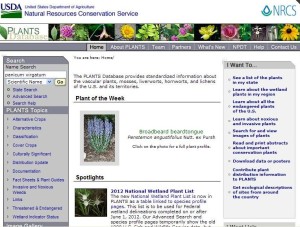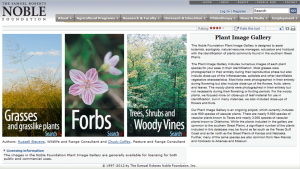When managing for wildlife, it is extremely important for landowners to know the plants on their property so that you can know which plants are good for wildlife and to identify invasive plants. This can be a difficult task for landowners who have little plant identification skills. Before you can assess the quality and health of the vegetation of your property, you have to know what you have. Luckily, there are some excellent resources out there to help landowners easily identify different plants.
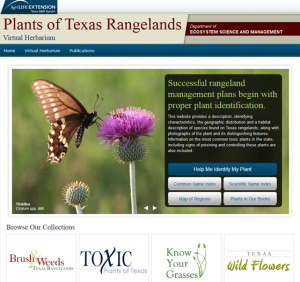 First, the Ecosystem Science and Management unit of Texas A&M AgriLife Extension Service developed “Plants of Texas Rangelands” where you can view their virtual herbarium to scroll through images and read publications to learn more about different species, and you can click the “Help Me Identify My Plant” button to determine the plant in question.
First, the Ecosystem Science and Management unit of Texas A&M AgriLife Extension Service developed “Plants of Texas Rangelands” where you can view their virtual herbarium to scroll through images and read publications to learn more about different species, and you can click the “Help Me Identify My Plant” button to determine the plant in question.
Next, “Aquaplant” is managed by our Fisheries 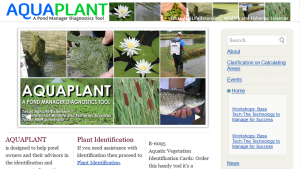 specialists to help pond and wetland owners identify aquatic plants. This website provides a description of the plant, explains its aquatic life and wildlife value, and gives management recommendations for chemical, mechanical, or biological control options.
specialists to help pond and wetland owners identify aquatic plants. This website provides a description of the plant, explains its aquatic life and wildlife value, and gives management recommendations for chemical, mechanical, or biological control options.
The most comprehensive plant database in the country is the “PLANTS Database,” developed by the U.S. Department of Agriculture Natural Resource Conservation Service. This site has identification keys and over 40,000 images of different plants to help landowners with identify plants. You can also see a list of plants in your state or region, learn about their distribution, wildlife value, wetland indicator, and many other characteristics to help you manage your land.
The Texas A&M Forest Service developed the “Trees of Texas” website to help 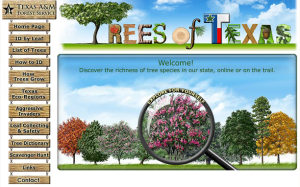 landowners identify trees as well as search for particular trees by leaf type or ecoregion. They also describe how trees grow so that landowners can gain understanding of their needs, and describe invasive trees that are harming ecosystems around the state.
landowners identify trees as well as search for particular trees by leaf type or ecoregion. They also describe how trees grow so that landowners can gain understanding of their needs, and describe invasive trees that are harming ecosystems around the state.
The Noble Foundation, based in southern Oklahoma, has developed a Plant Image Gallery designed for southern Oklahoma and North Texas, this website helps landowners identify numerous grasses and grass-like plants, forbs, and trees by name or image.
Texas Invasives was developed to educate the public about how invasive plants, 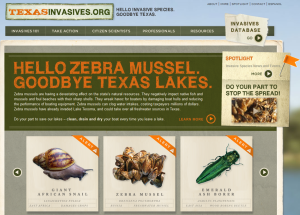 animals, insects, and pathogens spread and why they are so damaging to the environment and economy of our state. This site may not be as useful for identifying different species, but if you know what you’re looking for, you can learn a lot about these species at this website. Partners for this website include, Texas Parks and Wildlife Department, Agrilife Extension, Texas A&M Forest Service, and the US Fish and Wildlife Service.
animals, insects, and pathogens spread and why they are so damaging to the environment and economy of our state. This site may not be as useful for identifying different species, but if you know what you’re looking for, you can learn a lot about these species at this website. Partners for this website include, Texas Parks and Wildlife Department, Agrilife Extension, Texas A&M Forest Service, and the US Fish and Wildlife Service.
Watch this video to see how you can make your own plant field guide as you learn the plants on your land.
